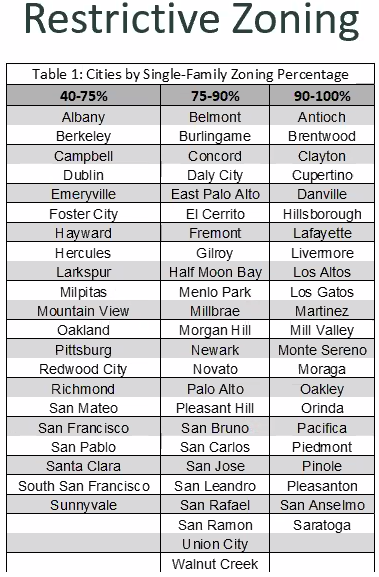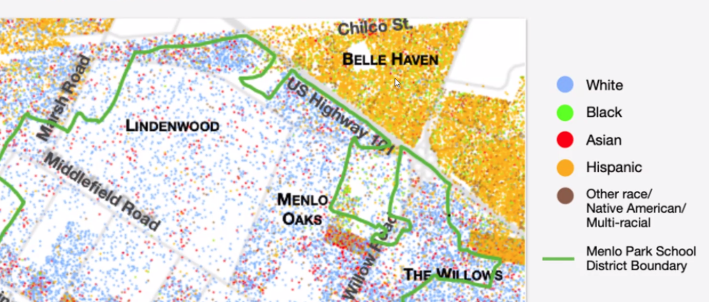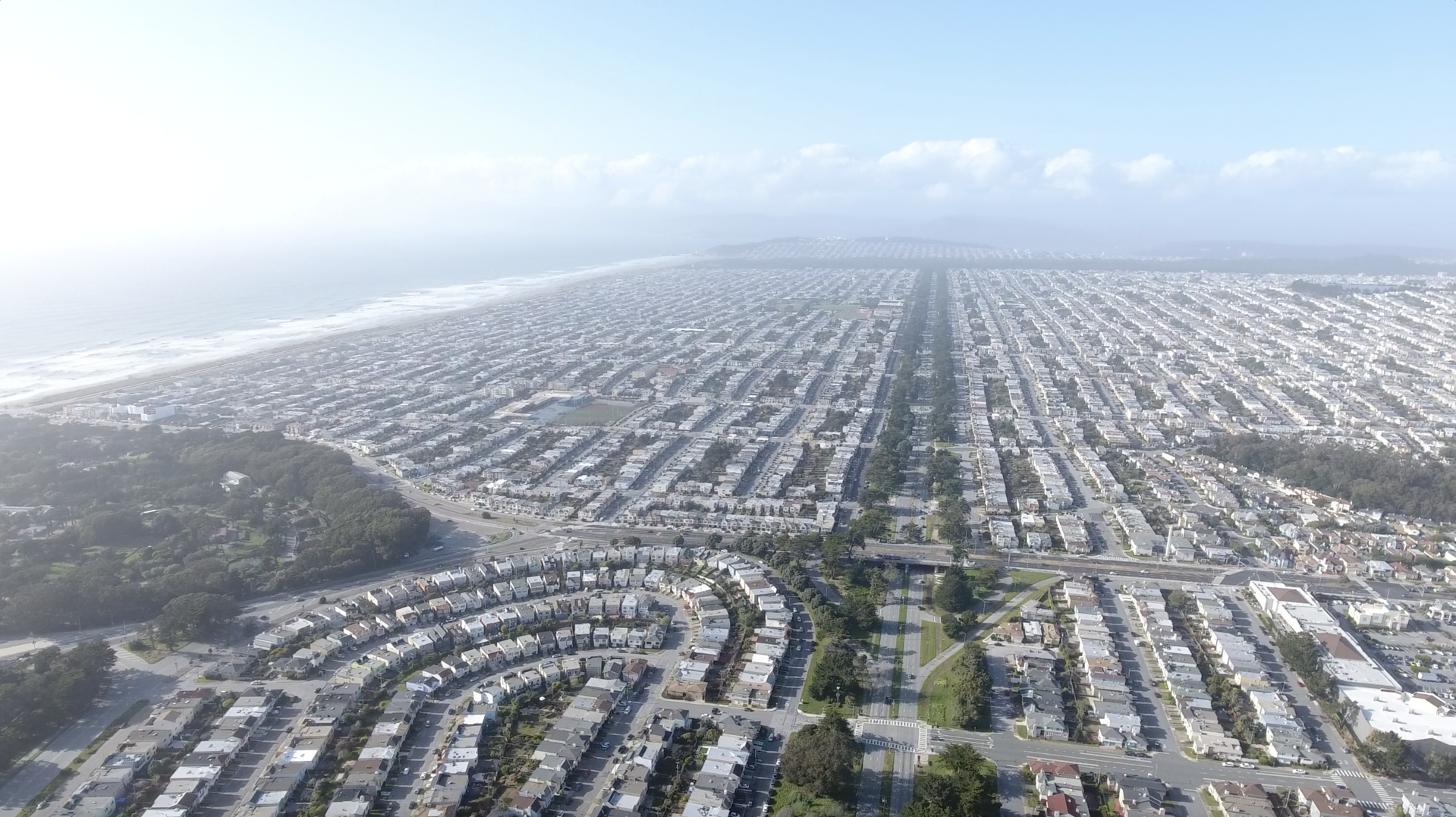Piedmont is a "doughnut city"--separate, but completely surrounded by, Oakland.
Piedmont is around two percent Black. And Oakland is 23 percent Black.
Piedmont is also "98 percent zoned for single-family homes," explained Irene Cheng, a researcher with the California College of the Arts, during a talk yesterday afternoon at SPUR about the correlation between zoning and segregation.
This is more than an interesting coincidence, explained the speakers. Single-family zoning is a direct outgrowth of now-illegal exclusionary, racist covenants. In the early 20th Century, developers openly advertised that communities banned Asians and "negroes" in the same way they boasted about underground power lines. Below is an ad for Havenscourt, a housing development in Oakland, which uses Piedmont's exclusionary zoning as a model of a desirable community:

After Buchanan v. Warley, the 1917 Supreme Court case that banned blatant racial exclusion, cities developed workarounds by expanding zoning for single-family homes, for which Black people could not get mortgages due to redlining lending practices. "Piedmont began enacting ever-restrictive zoning codes," said Cheng. "They have 'regular' single-family and 'estate zone,' where the minimum lot size is 20,000 square feet. And 'charter city' zoning is enshrined in their covenants and can only be changed by a citywide ballot measure."
Cheng is using Piedmont as an example; it is not unique. Similar zoning, designed to keep out lower-cost, higher-density construction and the people who would rent and buy the apartments and condos, exist throughout the Bay Area and the country.
"In Concord, 85 percent of the residential area is zoned for single-family only," explained Stephen Menendian of Berkeley's Othering & Belonging Institute. "It's 78 percent of Hayward, Albany is 69 percent...in the aggregate, about 85 percent of the Bay Area's residential areas are zoned exclusively for single-family."
To be clear, that means "...it’s illegal to build denser housing" on the vast majority of the Bay Area's residential land.

And although Black people and other minorities can't now be legally banned from living in any particular area, the economic segregation caused by historic exclusionary zoning continues. It also means that white people are much better able to pass along wealth from home equity to their children, so that they can buy houses. "Home equity is still a prime source of wealth and a huge factor in the racial wealth gap," said Cheng. This has created a multi-generational perpetuation of historic, exclusionary zoning.
Working-class and poor people are left competing for apartments and condos in the few areas that allow them. The very limited space allowed for denser development pushes up costs. These areas also have less access to the best jobs, parks, and schools. "Income is a proxy for race," said Lillian Lew-Hailer of MidPen Housing, which specializes in affordable developments. "Earnings and savings gaps really matter to whether you can afford a down payment or even a rental deposit."

Zoning makes it impossible to add low-income housing in most of the region. So even well-meaning developers are often forced to cram denser housing into the few small areas where it already exists. As an example, Lew-Hailer showed the above map to contrast Belle Haven, which is dense and mostly Hispanic, with Menlo Park, which is zoned for single-family and has basically no Black households. The map reflects historic redlining--underscored by the placement of Highway 101--that has kept Hispanics and Blacks out of areas with single-family, mostly white-owned homes.
Lew-Hailer explained how officials even "gerrymandered the border to bring more white neighborhoods into the Menlo Park school district."
The bottom line is that even if people are not consciously or intentionally racist, modern, single-family zoning policies perpetuate the effects of an overtly racist past, explained Menendian. It's an anachronism that needs reforming if the region wants to build more equitable, affordable communities, explained the speakers.
For more on this research, check out the "Single-Family Zoning in the San Francisco Bay Area" report from the Othering & Belonging Institute.
For more events like these, visit SPUR’s events page.





